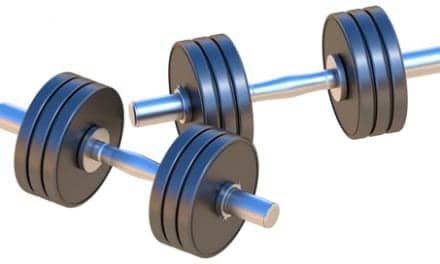Researchers report they are moving closer to a new approach for improving spinal fusion procedures and repairing broken or defective bones that avoids an overproduction of bone that commonly occurs in current treatments.
Undesired bone growth outside of targeted repair areas in rat femurs was significantly reduced by delivering a potent bone-forming protein called bone morphogenetic protein, or BMP, using a new biomaterial made from heparin, they suggest.
The team – led by Marian H. Hettiaratchi, a bioengineer in the Phil and Penny Knight Campus for Accelerating Scientific Impact at the University of Oregon – describe the approach in Science Advances, according to a media release from the University of Oregon.
Hettiaratchi began exploring the use of heparin microparticles to deliver BMP as a possible way to stop abnormal bone growth more than five years ago while a doctoral student at the Georgia Institute of Technology under the mentorship of co-authors Robert Guldberg and Todd McDevitt.
The traditional approach of using high doses of BMP alone has led to numerous complications in humans, including soft tissue inflammation and abnormal ossification.
For the new study, Hettiaratchi and colleagues fed their earlier results from experiments done in both rats and test tubes into computer simulations to explore ways to adjust their heparin-based approach in animal testing with levels of BMP comparable to dosages required in human bone-repair procedures.
“We focused on using doses that were more clinically relevant. In humans, the typical treatment uses 0.1 to 0.2 milligrams of BMP per kilogram of body weight, so we used the same amount in the rats,” Hettiaratchi says. “Most research done in rats uses 10 times less BMP to repair bone, which isn’t comparable to what’s done in humans and doesn’t exhibit the side effects of a clinical BMP dose.”
Two different strengths of the combination were used, resulting in 40% to 50% reductions in abnormal ossification. The heparin microparticles contain heparin’s long-chained linear polysaccharides, with sulfated groups which drive stronger binding affinity to BMP.
The heparin and BMP, mixed in an alginate hydrogel, were injected into a nanofiber mesh tube – created in Guldberg’s lab to isolate a repair area – already inserted into femoral defects in the rats. Human medical practices have relied on high doses of BMP injected into a collagen sponge, which leads to abnormal ossification in surrounding soft tissue as BMP rapidly escapes the sponge, the release explains.
The findings represent a proof-of-concept for fine-tuning the approach rather than a route into clinical testing in humans, Hettiaratchi states. The eventual goal, she adds, is to create synthetic heparin-like microparticles that achieve the same results while avoiding potential side effects of heparin.
“The problem with healing large bone defects clinically is that the BMP delivered using collagen sponges results in abnormal bone formation because the drug doesn’t stay on the material,” Hettiaratchi comments, in the release. “Our new material retains much more of the BMP, keeping it localized. You don’t get bone formation outside the targeted area.”
Ideally, she concludes, a synthetic heparin-like drug could be engineered to only bind to BMP. Such work will be the initial focus in her UO lab, which will open in early 2020.
[Source(s): University of Oregon, EurekAlert]




